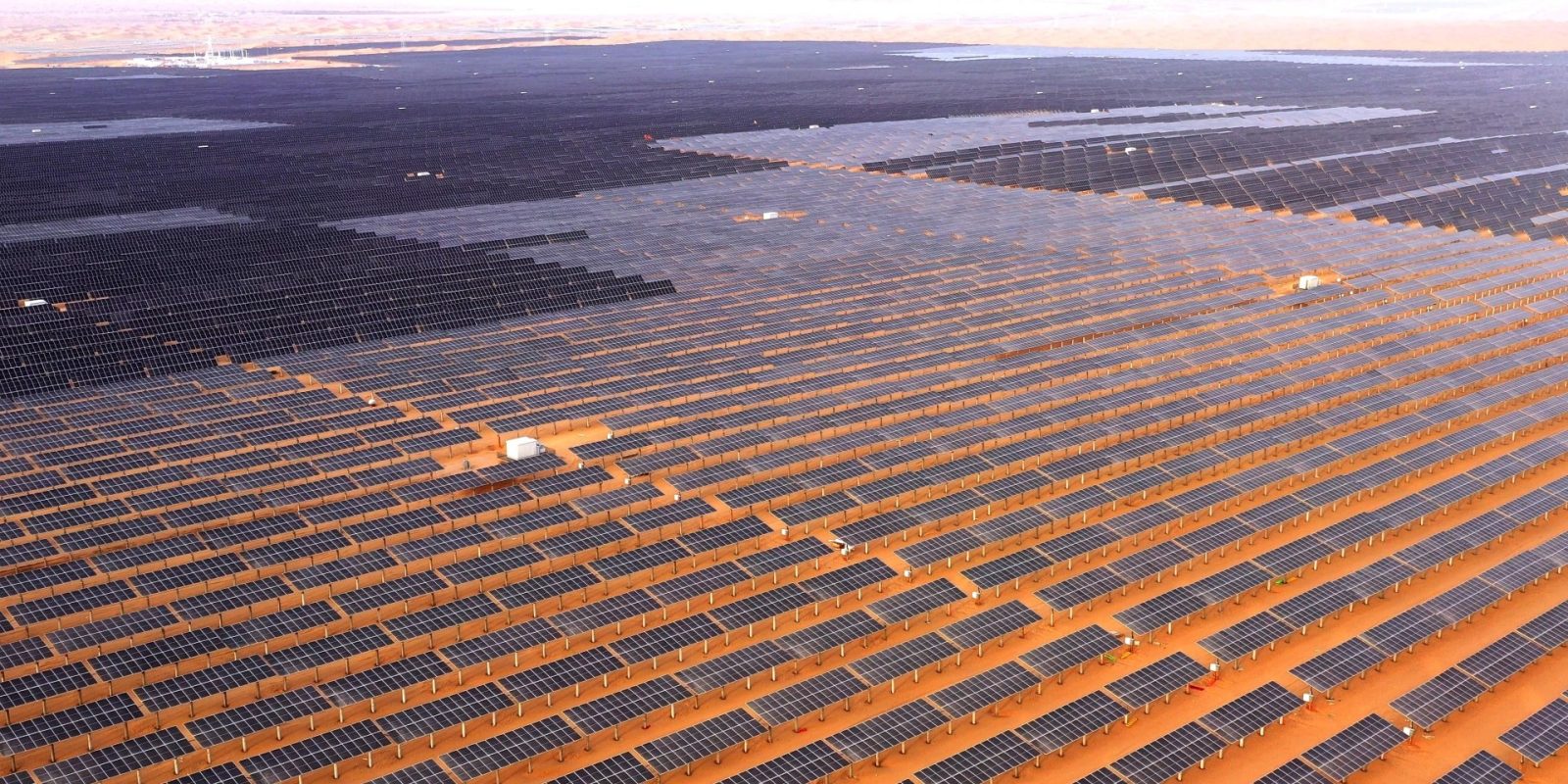The first of China’s desert solar and wind projects is online, and it’s huge
The first of many solar and wind projects in China’s deserts is now online, and it’s capable of powering 1.5 million households.
This first phase of this solar and wind project is in the Tengger Desert, which lies on the southern edge of the Gobi Desert. It has an installed capacity of 1 million kilowatts, and it’s expected to generate 1.8 billion kilowatt-hours each year, according to its operating company, China Energy.
It’s also China’s first ultrahigh-voltage power transmission channel and the first major renewable project that transmits clean power from the Gobi Desert and other arid regions to the Hunan province.
The entire 85 billion yuan ($12.28 billion) project will have a total installed capacity of 13 million kilowatts.
China’s government launched its desert renewable energy project at the end of 2021, and it has big plans – in total, it intends to install 100 GW of solar and wind capacity in arid areas that cover 19 provinces.
China Daily reports:
An analyst said regions like Ningxia [the autonomous region where this project is located], as well as Xinjiang and Inner Mongolia, will play a key role in boosting the proportion of clean power in the country’s energy mix while helping the country achieve its sustainable energy ambitions, thanks to abundant wind and solar resources.
Read more: China expected to add up to 90 GW of solar power capacity, a record increase, in 2022
Photo: China News Service
UnderstandSolar is a free service that links you to top-rated solar installers in your region for personalized solar estimates. Tesla now offers price matching, so it’s important to shop for the best quotes. Click here to learn more and get your quotes. — *ad.
FTC: We use income earning auto affiliate links. More.

The first of many solar and wind projects in China’s deserts is now online, and it’s capable of powering 1.5 million households.
This first phase of this solar and wind project is in the Tengger Desert, which lies on the southern edge of the Gobi Desert. It has an installed capacity of 1 million kilowatts, and it’s expected to generate 1.8 billion kilowatt-hours each year, according to its operating company, China Energy.
It’s also China’s first ultrahigh-voltage power transmission channel and the first major renewable project that transmits clean power from the Gobi Desert and other arid regions to the Hunan province.
The entire 85 billion yuan ($12.28 billion) project will have a total installed capacity of 13 million kilowatts.
China’s government launched its desert renewable energy project at the end of 2021, and it has big plans – in total, it intends to install 100 GW of solar and wind capacity in arid areas that cover 19 provinces.
China Daily reports:
An analyst said regions like Ningxia [the autonomous region where this project is located], as well as Xinjiang and Inner Mongolia, will play a key role in boosting the proportion of clean power in the country’s energy mix while helping the country achieve its sustainable energy ambitions, thanks to abundant wind and solar resources.
Read more: China expected to add up to 90 GW of solar power capacity, a record increase, in 2022
Photo: China News Service
UnderstandSolar is a free service that links you to top-rated solar installers in your region for personalized solar estimates. Tesla now offers price matching, so it’s important to shop for the best quotes. Click here to learn more and get your quotes. — *ad.
FTC: We use income earning auto affiliate links. More.
